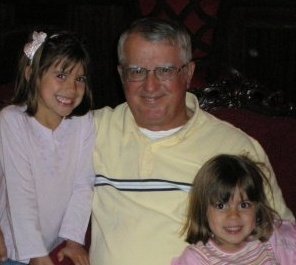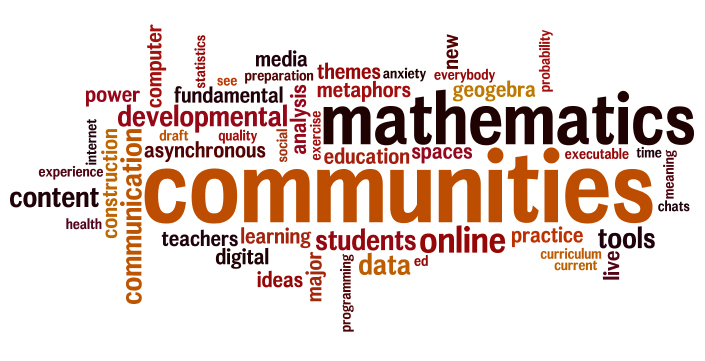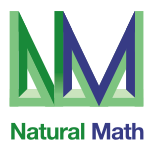- Home /

Milo Gardner
July 21, 2010
Presenter
Milo Gardner: Personal math skills have connected 50 years of experience. As a 19 year old military cryptanalysis (Russian, Arabic) was enjoyed for two years, living in Germany and Lebanon. A post-military math degree was earned and applied at Vandenberg AFB (range safety). Aerospace was enjoyed for six years, earning a graduate business degree before leaving the field. Moving on to public and private finance for 30 years an early retirement allows several math hobbies. Math hobbies include decoding rational number patterns directly from hieratic Egyptian texts. Scarce Greek unit fraction texts have been indirectly "decoded" by reading Plato's "Republic" and consulting Arab unit fraction texts, medieval unit fraction texts, often Fibonacci's Liber Abaci. At other times Chinese, East Indian (Vedic), and Mesoamerican zero remainder calendars (Mayan) projects have been enjoyed. Publications include Egyptian, Greek, Arab, medieval, and Mesoamerican based history of number theory articles. My wife of 45 years,Bertha is a naturalized American . Born in Durango, Mexico, Bertha and I have raised three children. Five grandchildren add joy to our lives almost every day. My immediate family members live in the suburbs of Sacramento, an hour from where Bertha and I were raised and met, a small town near Chico. At Cal State Chico an undergrad degree in mathematics was earned (1964). A grad degree was earned from Cal State Fullerton (1970).
Milo Gardner's more detailed bio
 Bruce Friedman: As a seasoned traveler and amateur math historian my overlapping interests in ancient history and science have been ever present in my pursuit of ancient truths. As a young man I studied Hebrew and Yiddish and French and other languages but found math to be my true passion. In my home state of NY, I frequently would meet with many diverse people and learn the sounds and patterns of the counting numbers. These lists of phonetics can be found on my website under the keyword NUMBERS:
http://www.mathorigins.com/N. htm Surprisingly, much of this has come while talking with NYC taxi and limo drivers. Most of my career has been in construction and management and my sense of order and mathematical precision has been a great asset. I have prided myself for the pursuit of excellence in work and play. In 1997 I sold my interests in a Long Island construction company to pursue similar action in NY City. In the two weeks between one career and the next I stumbled innocently upon the websites about the Rhind Mathematical Papyrus that Milo Gardner had put online. I was hooked. Milo and I began our discourse. In 1999 I visited Egypt and studied at the library to the Egyptian Museum in Cairo and have continued to visit places where my passion for similar ancient mathematical artifacts could be sated. I have visited London to see the RMP (2007) and the Pushkin Museum in Moscow to see the Moscow Mathematical Papyrus (2006) and will continue to steer my vacations towards the remnants of ancient civilizations like the pyramids at Chitzen Itza (Cancun-2006). In 2000-01 I aided researcher and educator Michael St. John in the editing and translation and publishing of a text on Ancient Egyptian Cubits. I honed my research skills while we produced a side by side translation of Richard Lepsius's: " Die alt agyptische Elle und ihre Eintheilung." (1865) The modern English title: "The Ancient Egyptian Cubit and its Subdivisions." (2001) includes improved footnotes and explanations and corrections of facts that have been uncovered since 1865. This is the most comprehensive text on this very challenging topic. While living in NYC I viewed the lesser known Hekanakhte Papyri at the Met and many of the glorious resources of the NY Public Library. Much research was copied and archived and I have many notes from these studies available on
Mathorigins.com. My hope is to connect my intuitive math skill set to the historical record and show that we can all follow the path of our current maths back in time before the origin of writing and formal language and still expect some of those skills to be present. Some of us were meant to be methodical thinkers before we found any way to express ourselves. It is quite a privilege to live in a time where all this research can be shared internationally without delay. I look forward to sharing with all of you.
Bruce Friedman: As a seasoned traveler and amateur math historian my overlapping interests in ancient history and science have been ever present in my pursuit of ancient truths. As a young man I studied Hebrew and Yiddish and French and other languages but found math to be my true passion. In my home state of NY, I frequently would meet with many diverse people and learn the sounds and patterns of the counting numbers. These lists of phonetics can be found on my website under the keyword NUMBERS:
http://www.mathorigins.com/N. htm Surprisingly, much of this has come while talking with NYC taxi and limo drivers. Most of my career has been in construction and management and my sense of order and mathematical precision has been a great asset. I have prided myself for the pursuit of excellence in work and play. In 1997 I sold my interests in a Long Island construction company to pursue similar action in NY City. In the two weeks between one career and the next I stumbled innocently upon the websites about the Rhind Mathematical Papyrus that Milo Gardner had put online. I was hooked. Milo and I began our discourse. In 1999 I visited Egypt and studied at the library to the Egyptian Museum in Cairo and have continued to visit places where my passion for similar ancient mathematical artifacts could be sated. I have visited London to see the RMP (2007) and the Pushkin Museum in Moscow to see the Moscow Mathematical Papyrus (2006) and will continue to steer my vacations towards the remnants of ancient civilizations like the pyramids at Chitzen Itza (Cancun-2006). In 2000-01 I aided researcher and educator Michael St. John in the editing and translation and publishing of a text on Ancient Egyptian Cubits. I honed my research skills while we produced a side by side translation of Richard Lepsius's: " Die alt agyptische Elle und ihre Eintheilung." (1865) The modern English title: "The Ancient Egyptian Cubit and its Subdivisions." (2001) includes improved footnotes and explanations and corrections of facts that have been uncovered since 1865. This is the most comprehensive text on this very challenging topic. While living in NYC I viewed the lesser known Hekanakhte Papyri at the Met and many of the glorious resources of the NY Public Library. Much research was copied and archived and I have many notes from these studies available on
Mathorigins.com. My hope is to connect my intuitive math skill set to the historical record and show that we can all follow the path of our current maths back in time before the origin of writing and formal language and still expect some of those skills to be present. Some of us were meant to be methodical thinkers before we found any way to express ourselves. It is quite a privilege to live in a time where all this research can be shared internationally without delay. I look forward to sharing with all of you.
 Bruce Friedman: As a seasoned traveler and amateur math historian my overlapping interests in ancient history and science have been ever present in my pursuit of ancient truths. As a young man I studied Hebrew and Yiddish and French and other languages but found math to be my true passion. In my home state of NY, I frequently would meet with many diverse people and learn the sounds and patterns of the counting numbers. These lists of phonetics can be found on my website under the keyword NUMBERS:
http://www.mathorigins.com/N. htm Surprisingly, much of this has come while talking with NYC taxi and limo drivers. Most of my career has been in construction and management and my sense of order and mathematical precision has been a great asset. I have prided myself for the pursuit of excellence in work and play. In 1997 I sold my interests in a Long Island construction company to pursue similar action in NY City. In the two weeks between one career and the next I stumbled innocently upon the websites about the Rhind Mathematical Papyrus that Milo Gardner had put online. I was hooked. Milo and I began our discourse. In 1999 I visited Egypt and studied at the library to the Egyptian Museum in Cairo and have continued to visit places where my passion for similar ancient mathematical artifacts could be sated. I have visited London to see the RMP (2007) and the Pushkin Museum in Moscow to see the Moscow Mathematical Papyrus (2006) and will continue to steer my vacations towards the remnants of ancient civilizations like the pyramids at Chitzen Itza (Cancun-2006). In 2000-01 I aided researcher and educator Michael St. John in the editing and translation and publishing of a text on Ancient Egyptian Cubits. I honed my research skills while we produced a side by side translation of Richard Lepsius's: " Die alt agyptische Elle und ihre Eintheilung." (1865) The modern English title: "The Ancient Egyptian Cubit and its Subdivisions." (2001) includes improved footnotes and explanations and corrections of facts that have been uncovered since 1865. This is the most comprehensive text on this very challenging topic. While living in NYC I viewed the lesser known Hekanakhte Papyri at the Met and many of the glorious resources of the NY Public Library. Much research was copied and archived and I have many notes from these studies available on
Mathorigins.com. My hope is to connect my intuitive math skill set to the historical record and show that we can all follow the path of our current maths back in time before the origin of writing and formal language and still expect some of those skills to be present. Some of us were meant to be methodical thinkers before we found any way to express ourselves. It is quite a privilege to live in a time where all this research can be shared internationally without delay. I look forward to sharing with all of you.
Bruce Friedman: As a seasoned traveler and amateur math historian my overlapping interests in ancient history and science have been ever present in my pursuit of ancient truths. As a young man I studied Hebrew and Yiddish and French and other languages but found math to be my true passion. In my home state of NY, I frequently would meet with many diverse people and learn the sounds and patterns of the counting numbers. These lists of phonetics can be found on my website under the keyword NUMBERS:
http://www.mathorigins.com/N. htm Surprisingly, much of this has come while talking with NYC taxi and limo drivers. Most of my career has been in construction and management and my sense of order and mathematical precision has been a great asset. I have prided myself for the pursuit of excellence in work and play. In 1997 I sold my interests in a Long Island construction company to pursue similar action in NY City. In the two weeks between one career and the next I stumbled innocently upon the websites about the Rhind Mathematical Papyrus that Milo Gardner had put online. I was hooked. Milo and I began our discourse. In 1999 I visited Egypt and studied at the library to the Egyptian Museum in Cairo and have continued to visit places where my passion for similar ancient mathematical artifacts could be sated. I have visited London to see the RMP (2007) and the Pushkin Museum in Moscow to see the Moscow Mathematical Papyrus (2006) and will continue to steer my vacations towards the remnants of ancient civilizations like the pyramids at Chitzen Itza (Cancun-2006). In 2000-01 I aided researcher and educator Michael St. John in the editing and translation and publishing of a text on Ancient Egyptian Cubits. I honed my research skills while we produced a side by side translation of Richard Lepsius's: " Die alt agyptische Elle und ihre Eintheilung." (1865) The modern English title: "The Ancient Egyptian Cubit and its Subdivisions." (2001) includes improved footnotes and explanations and corrections of facts that have been uncovered since 1865. This is the most comprehensive text on this very challenging topic. While living in NYC I viewed the lesser known Hekanakhte Papyri at the Met and many of the glorious resources of the NY Public Library. Much research was copied and archived and I have many notes from these studies available on
Mathorigins.com. My hope is to connect my intuitive math skill set to the historical record and show that we can all follow the path of our current maths back in time before the origin of writing and formal language and still expect some of those skills to be present. Some of us were meant to be methodical thinkers before we found any way to express ourselves. It is quite a privilege to live in a time where all this research can be shared internationally without delay. I look forward to sharing with all of you.
About the project
Egyptian math was written in proto-number theory, an arithmetic metaphor that lasted for over 3,500 years. Here are some highlights from the webinar agenda:
- Introduce commonly used or abbreviated terms in some detail (AE; Horus-eye; LCM; GCD; Red Auxiliary number; RMP; AWT; MMP; KP; Cubit; Hekat et cetera) and work on Egypt Math Glossary

- Describe why the study of Ancient math is such a narrow part of our modern education.
- Show the Achmim Wooden Tablet images, hosted at MathOrigins.com, and introduce the subtlety of the concept of proto number theory.

- Share and demonstrate a 1900 BCE Akhmim Wooden Tablet (AWT) VICTORY spreadsheet. Discuss the intent of this file and invite developer collaboration.
- Review the NON-algorithmic nature of the RMP 2/n table and discuss best software for moving forward with our work on the 2/n.
- Show how ancient Egyptians demonstrated arithmetic and geometric progressions and how things really have not changed in 4,000 years.
- Define the obstacles to teaching all of this to young children and describe the advantages of overcoming such.
- Share some history of mankind's accomplishments BEFORE any written language was in use and show how necessity was less the mother of invention than accomplishments themselves. Written languages exploded after 3,000 BCE around the Ancient Near East, to administer Tigris and Euphrates dams that had tamed the rivers around 3,400 BCE, that centralized the Egyptian economy in the Old Kingdom, and decentralized the Egyptian economy after 2050 BCE.
- Share a story on the 18th century invention of Cherokee Indian written language, a 10 year project that taught 90% of the Cherokee people to read, write and publish local newspapers. These events took place before the US Civil War, in which Cherokees were allies of the South, and the "Trail of Tears" removal of Cherokee peoples to Oklahoma after the Civil War. At the time 10% of Southern citizens were literate.
thub.nodes.view.add-new-comment
Event
Follow
Follow this event
No one has followed this yet.
Navigation
Related Events
RSM: Meet the founders of the unique enrichment program
Debriefing the NCTM Conference in Philadelphia: What we Learned about the Future of Math Education
Journal of Humanistic Mathematics
ESMA: European Society for Mathematics and Art.
SubQuan: A cross-reality solution to finally understand mathematics

